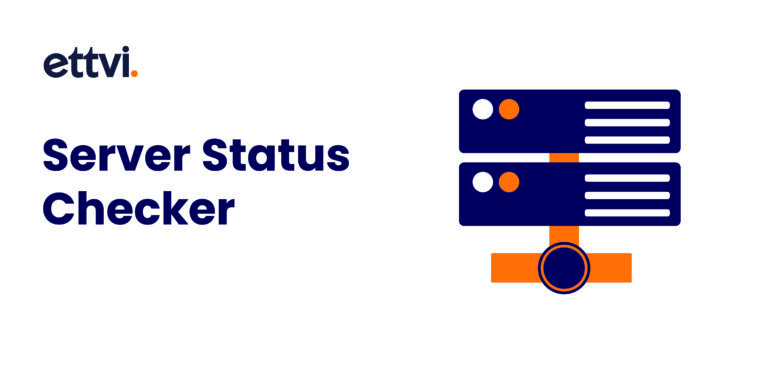Mastering URL Rewriting: Boost SEO and User Experience
If you’ve been working on website optimization, you know how important it is to have clean, user-friendly URLs. But when URLs look like a mess of random letters and numbers, it can be a real turn-off for visitors—and search engines aren’t fans either! That’s where a URL rewriting tool comes in. In a nutshell, these tools help you transform clunky URLs into ones that are easy to read, memorable, and great for SEO.
In this article, we’ll break down exactly what a URL rewriting tool is, why it matters, and how to start using one. By the end, you’ll have a clear understanding of how URL rewriting can benefit your website and improve your ranking.
What is a URL Rewriting Tool?
With just a few clicks, you can change a long, ugly string into something clean, concise, and easier to remember. URL rewriting tools are common features in web development platforms and often use Regular Expressions (Regex) to map out and transform URL patterns.
Why Use a URL Rewriting Tool?
You might be wondering: do nice-looking URLs really make that much of a difference? Here’s why a URL rewriting tool can make a big impact:
- Improved SEO – Search engines, like Google, love clean URLs because they’re easier to understand.
- Enhanced User Experience – Users are more likely to click on links that are clear and relevant.
- Better Branding – A tidy URL reinforces your brand and can make a lasting impression.
- Boosted Click-Through Rates – Studies show that concise, readable URLs encourage more clicks.
How Does URL Rewriting Work?
URL rewriting might sound complex, but in practice, it involves a couple of straightforward steps:
- Identify the Pattern – Pinpoint the sections of your URL you want to replace.
- Define the Rewrite Rule – Set up a rule that converts the original URL format to the new one.
- Apply the Rule – Implement the rule on your web server using a URL rewriting tool or code snippet.
Types of URL Rewriting
1. Client-Side URL Rewriting
Client-side URL rewriting, as the name implies, happens on the user’s device. It’s mostly done with JavaScript and involves updating the visible URL without reloading the page. Think of single-page applications (SPAs) where URL changes are instant, but no new pages load.
Benefits:
- Enhances user experience with faster response times.
- Often used for applications that want seamless transitions.
Limitations:
- SEO impact is usually less than server-side rewriting since search engines may not always “see” these URLs.
2. Server-Side URL Rewriting
In server-side URL rewriting, URLs are changed on the server before the page is served. This is done through web server configurations, such as Apache’s .htaccess file or Nginx’s configuration settings.
Benefits:
- Stronger SEO impact.
- Changes apply across the site, regardless of how the content is served.
Limitations:
- Requires server access, and misconfigurations can lead to server errors.
How to Choose the Best URL Rewriting Tool
When selecting a URL rewriting tool, here are some things to keep in mind:
Key Features to Look For
- User-Friendly Interface – A simple, intuitive interface can make a big difference.
- Customization Options – Look for tools that allow regex or rule-based rewriting.
- SEO-Friendly Options – Make sure the tool supports features that optimize your URLs for search engines.
- Error Handling – The tool should provide clear error messages and guidance on fixing URL issues.
Top URL Rewriting Tools in 2024
- Apache Mod_Rewrite: This tool works within an
.htaccessfile and is perfect for Apache servers. It offers a ton of flexibility but may require a bit of a learning curve. - Nginx URL Rewrite Module: Nginx users can rely on this module to rewrite URLs at the server level. Known for its performance and scalability, it’s ideal for high-traffic sites.
- Yoast SEO Plugin (WordPress): For WordPress users, Yoast’s plugin includes a URL rewriting feature with an intuitive interface—no coding required!
- ISAPI_Rewrite (IIS): Specifically designed for Microsoft IIS servers, this tool mimics the flexibility of Apache’s mod_rewrite and allows for easy rule creation.
Step-by-Step Guide to Using a URL Rewriting Tool
Here’s a basic step-by-step guide for those using Apache’s mod_rewrite tool:
- Enable mod_rewrite – Start by enabling the module on your Apache server if it isn’t already.
- Access the .htaccess File – Open the
.htaccessfile, typically found in your website’s root directory. - Define Rewrite Rules – Write rules to match URLs, using regex if needed.
- Test & Troubleshoot – Always test your rules and troubleshoot any errors.
Example Rewrite Rule for Apache
To transform a URL from /index.php?id=45 to /about-us, you could use this code in your .htaccess file:
apacheCopy codeRewriteEngine On
RewriteRule ^about-us$ index.php?id=45 [L]
Best Practices for URL Rewriting
Keeping URLs short and readable might seem easy, but it takes some strategy to do it right. Here are some top tips:
- Use Hyphens, Not Underscores – Google recommends hyphens between words to improve readability.
- Avoid Dynamic Parameters – Replace things like “?id=123” with relevant keywords.
- Stay Consistent – Consistency in URL structure helps both users and search engines.
- Keep It Relevant – URLs should reflect the content of the page clearly.
Common Pitfalls and How to Avoid Them
URL rewriting can make your site look professional and optimized, but there are some common mistakes to avoid:
- Ignoring Redirects – When you change a URL, don’t forget to set up redirects. Otherwise, you risk broken links and lost traffic.
- Overloading with Keywords – Stuffing keywords into URLs might look spammy. Focus on readability first.
- Complex URL Structures – Overly complicated URL structures can confuse users and make maintenance difficult.
FAQs
1. Do I really need a URL rewriting tool?
- If you want cleaner URLs that improve both SEO and user experience, then yes, a URL rewriting tool is a smart choice.
2. Is server-side URL rewriting better than client-side?
- For SEO purposes, server-side rewriting generally has more impact since it’s visible to search engines.
3. Can I use URL rewriting on any website?
- Most websites can benefit from URL rewriting, but the exact process will vary depending on your server and platform.
4. Will URL rewriting affect my SEO?
- Absolutely! Clean, optimized URLs contribute positively to SEO and can improve your site’s ranking.
Conclusion
A URL rewriting tool can be a game-changer for websites looking to improve their user experience and search engine optimization. From shorter, cleaner URLs to improved click-through rates, the benefits of using these tools are substantial. Choosing the right URL rewriting tool, however, is key—one that balances ease of use with customization.
So, next time you’re looking to improve your website’s performance, don’t overlook the power of URL rewriting! With the right approach, your URLs will not only look better but will work better for your site’s goals.






